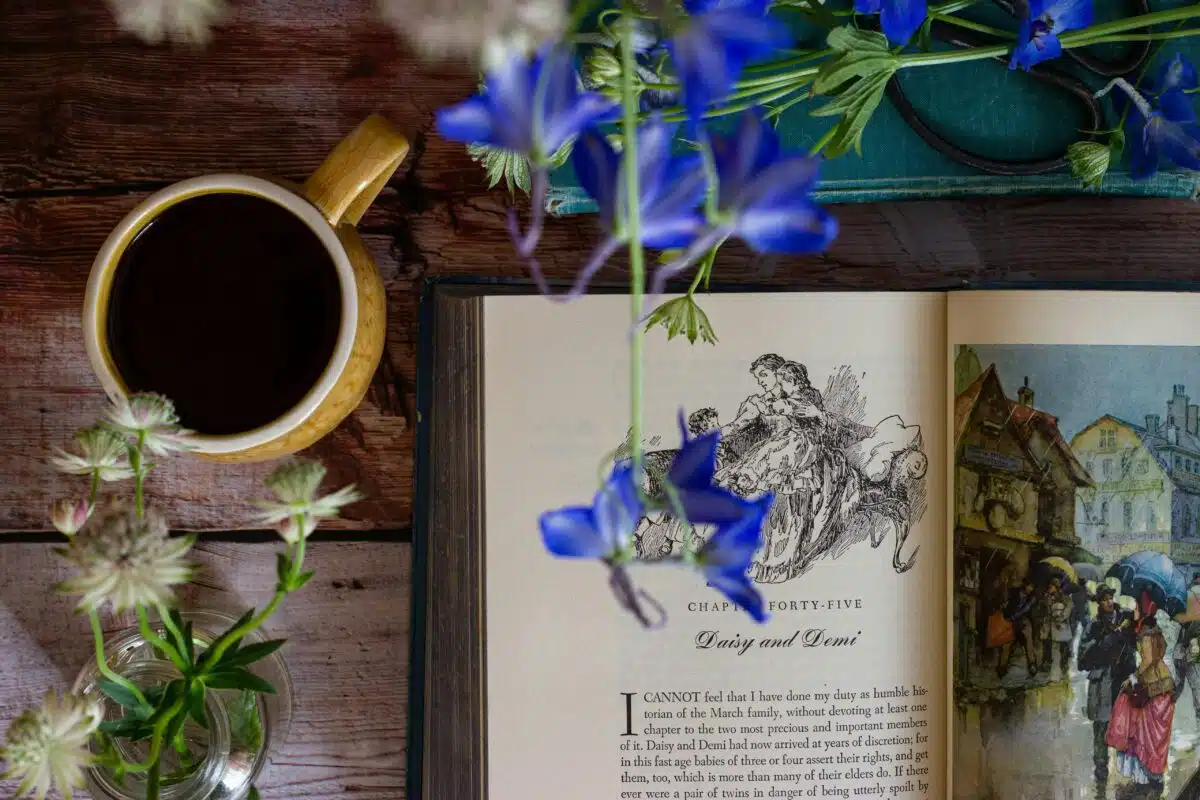Choosing the right children’s book illustrator is critical to your story’s success. This article dives directly into identifying an illustrator whose style resonates with your vision and the needs of your narrative. From understanding the illustrator’s role to selecting the perfect candidate, we’ll provide insights and tips for forging a successful collaboration that brings your children’s book to life.
Key Takeaways
Children’s book illustrators play a crucial role in defining the emotional and visual narrative of a story, with their art aiding in literacy and helping young readers process complex emotions.
Finding the right children’s book illustrator involves defining the book’s aesthetic, conducting a comprehensive search through platforms like freelance websites and illustrator associations, and carefully reviewing portfolios and past work.
Building a strong collaborative relationship with an illustrator requires clear communication, respect for creative workflows, and well-defined contracts outlining scope, compensation, and rights.
Understanding the Role of a Children’s Book Illustrator

Children’s book illustrators are like magicians, using their brushes and digital tools to create enchanting images that accompany a story. These images engage young readers, drawing them into the narrative. Moreover, the artwork often serves to clarify the text and provide contextual clues, helping children find deeper meaning in stories.
Through the portrayal of emotions, body language, and facial expressions, illustrations help children navigate complex subjects like grief and anxiety while inviting them to explore their own emotions and engage with fun images.
The Magic of Illustrations in Storytelling
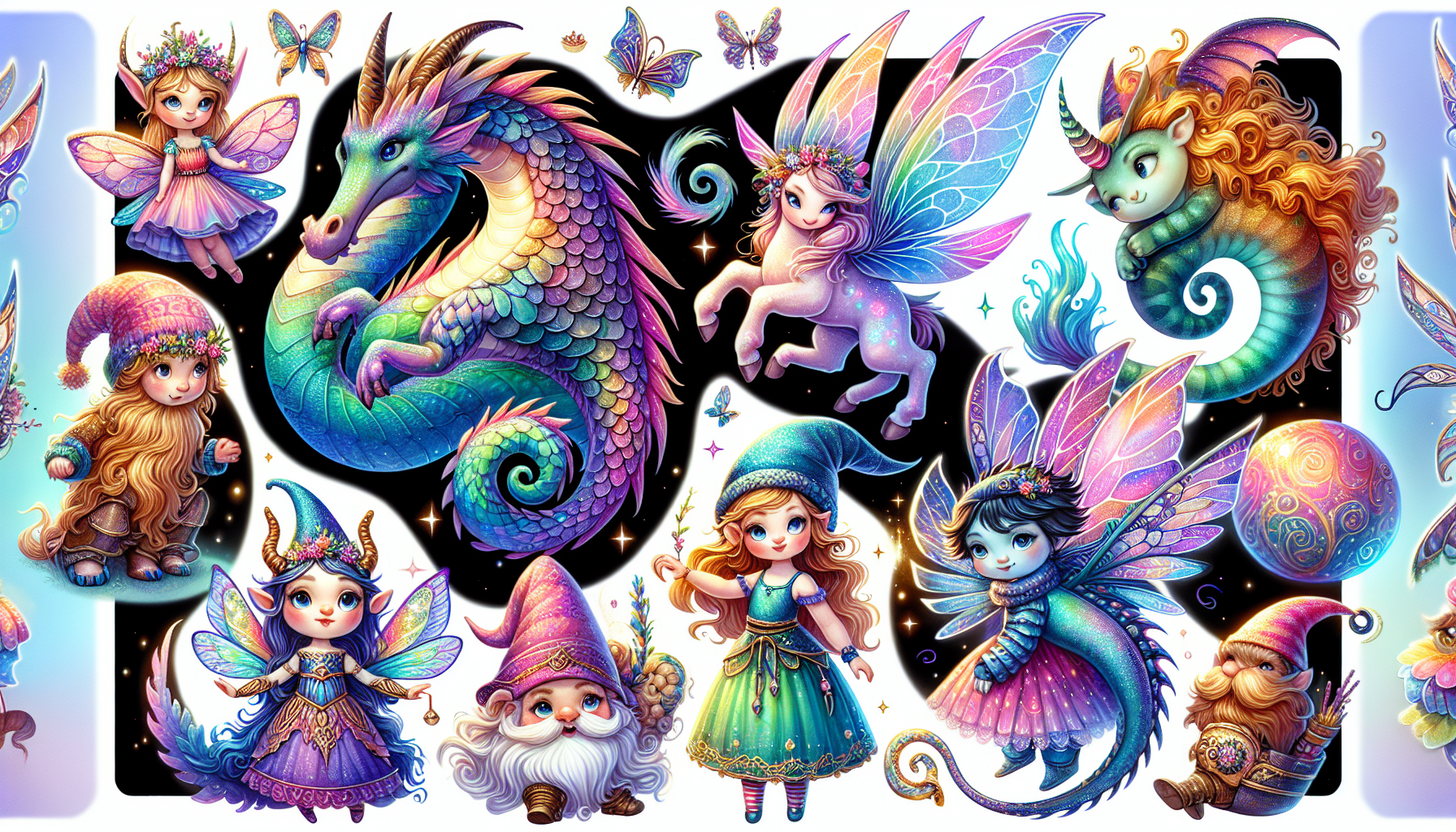
Illustrations, the heart of picture books, work in harmony with the written word to encourage more interactive story reading, thereby improving literacy outcomes. The visual content of illustrations aids parents in maintaining children’s focus during reading, facilitating memory integration and recall. The best children’s book illustrators know how to use colors and contrasts to convey the mood of the story and highlight key elements, evoking feelings such as comfort or excitement.
Their talent lies in creating artwork that effectively tells a story and supports the emotional tone of the manuscript, as they skillfully write the visual narrative.
Character Designs That Captivate
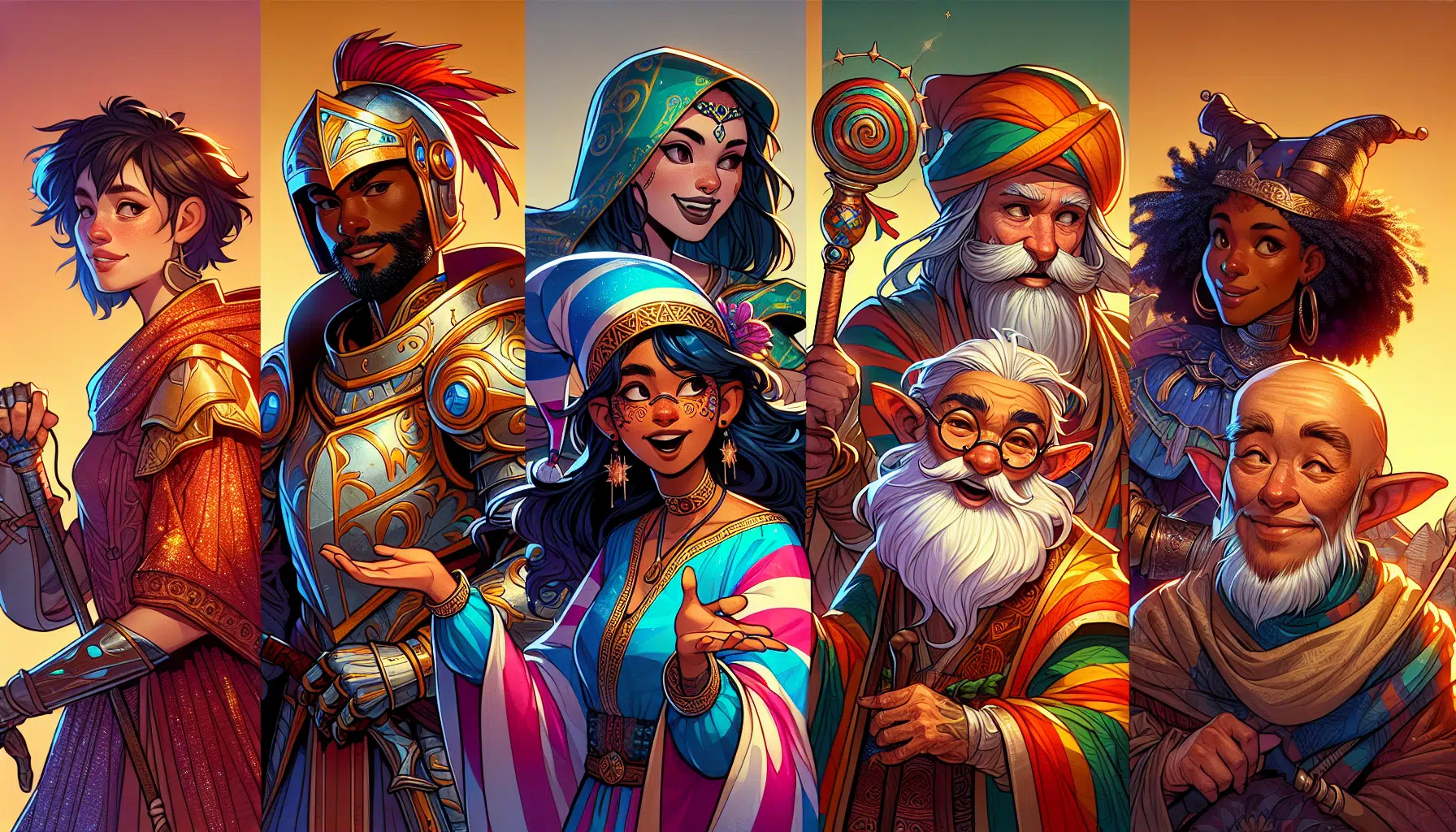
Creating memorable characters entails meticulous attention to detail, from their facial features and clothing to expressive body language and facial expressions that accurately convey their personalities and emotions. To captivate young readers, character designs need to portray relatable traits and embrace the diversity of the real world, enhancing the connection between the readers and the characters.
The characters’ visual style, whether stylized or realistic, should harmonize with the book’s tone and themes, ensuring a cohesive blend of narrative and illustrations.
Crafting Worlds Through Art
Just as a writer crafts worlds with words, an illustrator does so with art. The illustrator’s expertise in color theory, composition, and character consistency is vital in creating a coherent visual story that resonates with young readers. A strategic use of color and light plays a pivotal role in establishing a book’s mood or tone, and these choices should be in harmony with the narrative’s setting and atmosphere.
Allowing illustrators enough space in the manuscript significantly enhances the visual storytelling process, making the story more engaging and captivating for its audience.
The Search for Your Story’s Artist

The search for the ideal illustrator for your children’s book might appear daunting at first. Nonetheless, with some guidance, this process can transform into an exciting journey. Authors should seek an illustrator whose art style not only resonates with them but also fits seamlessly with the theme of their book. This requires an illustrator with a unique skill set that enables them to visually narrate a story in a way that enhances the written manuscript.
A quiz can be an effective starting point to guide authors in determining the type of illustrator that aligns with their storytelling style.
Defining Your Book’s Aesthetic
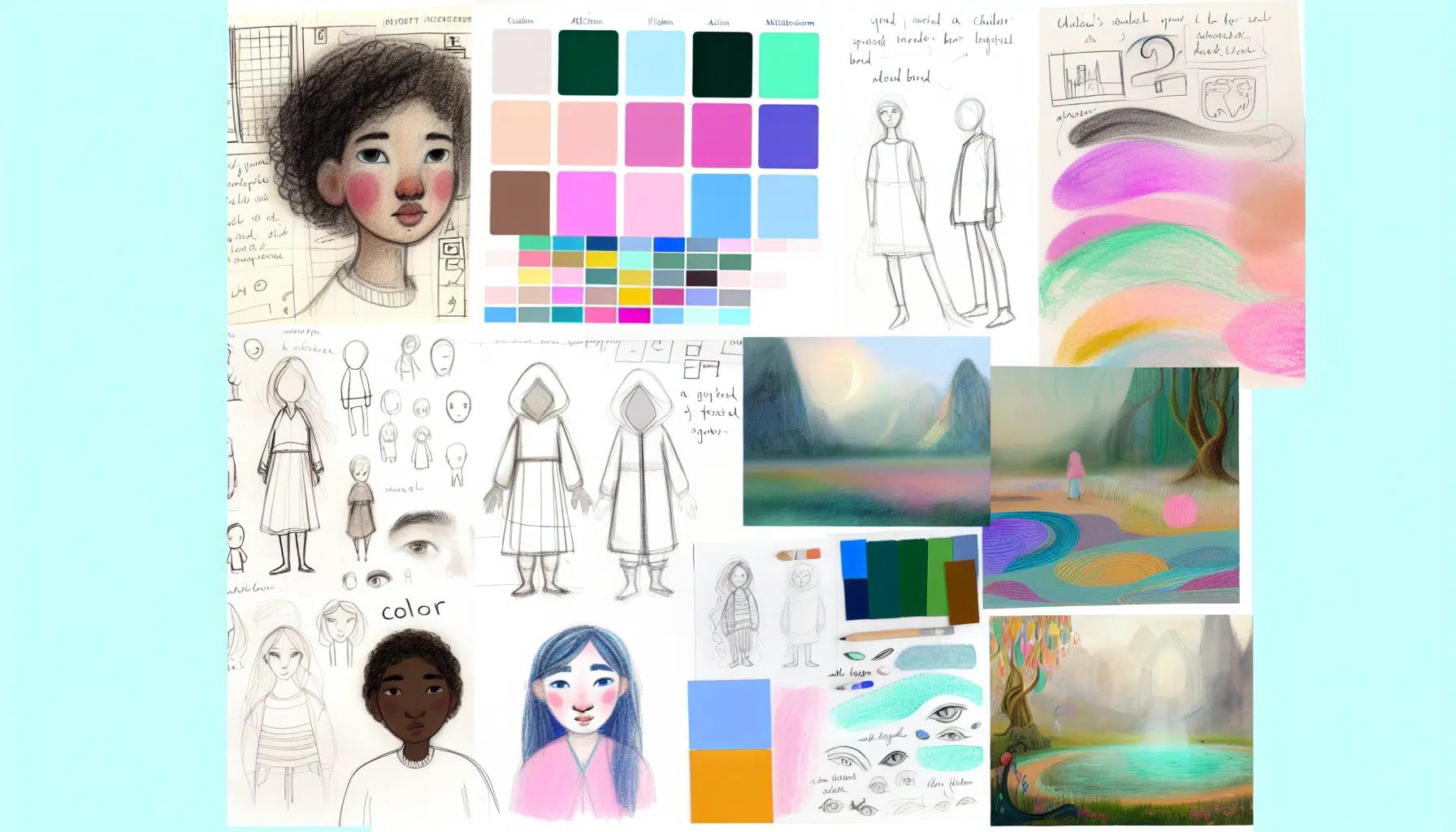
Prior to starting the search for an illustrator, authors need to establish the aesthetic of their book. The age group of the intended audience significantly influences the chosen style. Authors should familiarize themselves with various illustration styles that cater to their target demographic, including:
Hand-drawn sketches
Watercolor paintings
Digital illustrations
Collage art
Realistic drawings
By understanding the different styles available, authors can better communicate their vision to potential illustrators and find the perfect match for their book.
The level of detail for the book’s illustrations should also be determined, as younger children might prefer bold, simple designs, while older children may enjoy more intricate and nuanced artwork.
Where to Find Talented Illustrators
In the digital age, finding talented children’s book illustrators has never been easier. There are numerous avenues to explore, including:
Freelance sites like Upwork or Fiverr
Social media platforms such as Instagram and Twitter
Illustrator associations like the Society of Children’s Book Writers and Illustrators (SCBWI), which provide directories of members who specialize in children’s book illustrations
These resources offer valuable options for authors seeking the best children’s book illustrators for their projects, as well as a variety of other talented children’s book illustrators.
Alternatively, authors can also leverage the illustration sourcing team at Made for Kids to ensure their manuscript is brought to life with perfectly aligned artwork.
Reviewing Portfolios and Past Work
Upon identifying potential illustrators, the next vital step is to review their portfolios and previous work. While doing so, it’s important to ensure the illustrator’s past work maintains a level of quality and style that resonates with the envisioned book. Gauge the illustrator’s adaptability and experience by looking at the range of subjects and genres they have illustrated.
Additionally, assess the illustrator’s professionalism and ability to meet deadlines by seeking testimonials or references from their previous collaborations.
The Business of Illustrating Children’s Books
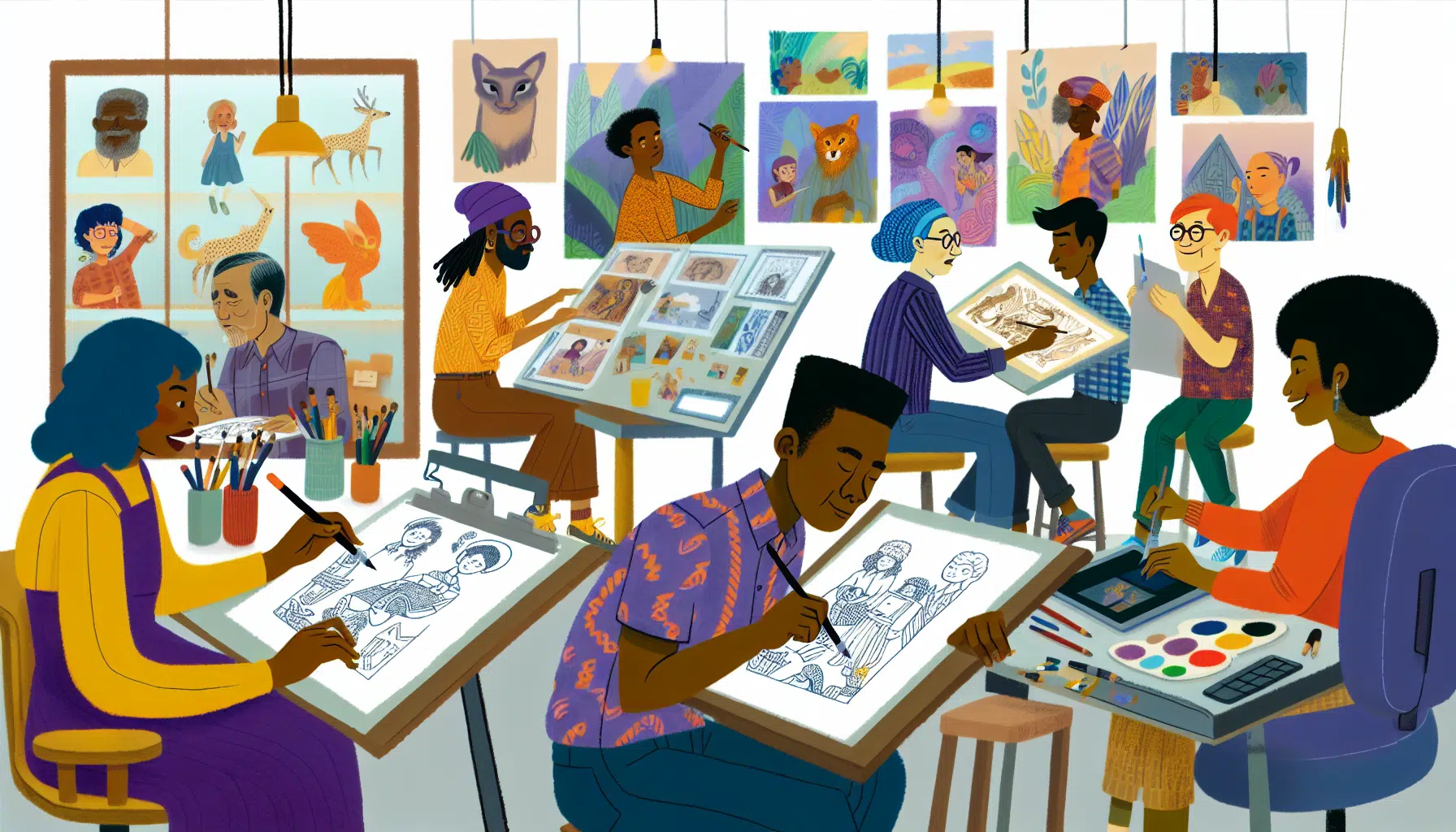
Dealing with the business aspect of collaborating with a children’s book illustrator can be intricate. It is essential to have detailed contracts that outline:
The scope of work
Deadlines
Copyright management
Payment schedules
Number of revisions
Final image formats
Illustrators may receive compensation either through a flat fee for their work or through royalties based on book sales, depending on the contract terms of their job.
Maintaining a successful author-illustrator relationship requires respect for the illustrator’s expertise while fulfilling the author’s vision for the book.
Navigating Contracts and Rights
Contracts with illustrators should include the following:
Explicit definition of the rights acquired from the illustrator, such as first-time rights, exclusive rights for a designated period, or outright copyright transfer.
Warranties confirming the originality of the work provided by the illustrator.
Indemnities to protect the publisher against any breach of the warranty.
Negotiation of contract details, including advance on royalties agreements and flat fees.
A clear Illustrator Agreement should be established before starting the collaboration, detailing essential aspects such as deadlines, costs, and payment modalities to ensure a smooth project flow.
Discussing Compensation and Royalties
The modes of compensation for children’s book illustrators may differ. It can include options like milestone payments, where the illustrator receives payment upon the completion of specific stages of the illustration process. Another option is royalties, which represent the illustrator’s ongoing stake in the book’s success and are predetermined percentages of the book’s retail price detailed in the contract.
Illustrators may also receive an advance against future royalties, which they start to earn back as the book sells.
Fostering a Collaborative Relationship

Building a successful collaborative relationship with your illustrator involves:
Regular and transparent communication
Utilizing structured forms for concise and effective feedback
Adapting to the illustrator’s workflow preferences to enhance productivity and efficiency.
A partnership where both author and illustrator are invested leads to more successful and enriching relationships, improving the potential for quality book cover design and overall book success.
Creative Collaboration: Working with an Illustrator

Collaborating with an illustrator is a creative endeavor necessitating explicit communication and reciprocal respect. Early discussions with the illustrator can help determine how illustrations will be incorporated into the book. Being flexible with an illustrator’s workflow, such as their approach to sketching and coloring, can contribute positively to the collaborative process and the end product.
Sharing Your Vision and Feedback
Effectively communicating your vision is a critical element of a successful collaboration with your illustrator. Detailed briefs, including deadlines, character and scene descriptions, and cover design ideas, should be provided to the illustrator.
Constructive feedback should aim for mutual growth, inviting dialogues with the illustrator to foster a positive relationship.
Balancing Creativity and Deadlines

Striking a balance between creativity and deadlines is essential for seamless project progression. Clear agreements detailing cost, deadlines, and copyright terms are crucial for managing project timelines. Breaking down the project into smaller tasks with individual deadlines can streamline the process and make it less overwhelming for the illustrator.
Understanding an illustrator’s preferential workflow can lead to more efficient deadline completion without impeding the creative process.
The Revision Process
The revision process is an integral part of the illustration process. Structured feedback forms for different stages of illustration, such as sketches and colored drafts, help keep the revision process organized and efficient. Continuous refinement and adjustments are part of the character design process, with feedback being crucial for improvement.
Digital editing skills are advantageous in the final stages of illustration, especially for revising art after seeing the printed copies.
Amplifying Your Book with Professional Publishing Services
Upon completion of your book’s illustrations, you might contemplate ways to enhance its success. Professional publishing services can help amplify your book’s reach and success. Made for Success brings all its years of publishing experience into the prestigous Made for Kids importing for children’s books, offering a range of services that turn ideas into books and help amplify authors’ messages.
Maximizing Visibility with Amazon Optimization
Amazon is a crucial platform for book sales, and optimizing your book’s presence on Amazon can significantly enhance its visibility. The A9 Amazon search algorithm uses sales performance to determine product ranking, so boosting sales can improve your book’s search result ranking and visibility.
An effective Amazon product listing requires a descriptive and powerful main title, a keyword-optimized subtitle, and the selection of most relevant categories for the book.
Boosting Promotion with Social Media and Media Appearances
In today’s digital age, social media is an invaluable tool for promoting your book. Platforms such as:
Instagram
Facebook groups
Reddit
Twitter
Podcasts
These can effectively attract attention to children’s books. Booking speaking engagements in libraries and bookstores, or appearing on family and children-focused podcasts allows authors to build trust with their audience and introduce their books directly.
Enhancing Your Book with Audiobook Production
Adding an audiobook version to your children’s book can significantly broaden its reach. Audiobooks offer an accessible and engaging alternative for children who find reading difficult or tedious, supporting language comprehension and information retention.
Engaging with audiobooks can provide meaningful parent-child bonding experiences and strengthen children’s critical thinking abilities.
From Sketch to Print: The Illustration Timeline
Completing a children’s book illustration project is a journey that can typically take anywhere from 3-6 months. The duration for illustration work significantly depends on the specific demands and complexity of the project. Illustrators often use organizational tools like digital schedules or reminder systems to track progress and manage deadlines effectively.
Initial Concepts and Sketches
The initial stages of an illustration project for a children’s book entail the creation of a dummy book and the development of final sketches. The dummy book serves as a preliminary mock-up of the book that guides the placement of text and illustrations, while final sketches lay the foundation for the eventual final artwork.
Color Palettes and Final Artwork
Post initial sketching, illustrators move on to selecting color palettes and crafting the final artwork. Understanding color theory is essential to effectively create the desired mood, atmosphere, and emotional impact.
The final artwork is typically delivered in a print-ready digital format to streamline the process.
Preparing for Publication
As the illustration process approaches completion, the final step involves preparation for publication. Delivering print-ready digital art for publication eliminates the need for mailing physical artwork and scanning, streamlining the process. Illustrations should come with concise captions that include a title or description and source or credit line, all contained within a separate document from the art.
Elevating Your Manuscript with Dazzling Cover Art
The cover art of a children’s book, being a potential reader’s initial point of contact, holds significant sway over the book’s success amidst stiff competition in the publishing industry. An effective cover should be visually pleasing, align with the book’s genre and tone, and possess a timeless quality.
Working with an illustration expert ensures that your book cover stands out, conveys professionalism, and has genre-specific appeal.
Talk to a Children’s Book Publishing Specialist at Made for Kids
The process of creating a children’s book is a remarkable journey, filled with exciting highs and challenging lows. At Made for Kids, we understand the intricacies of this journey and are here to guide you every step of the way. Our team of children’s book publishing specialists is ready to assist you, leveraging our optimized tools, relationships, and skills to deliver optimal outcomes for your book. Don’t hesitate to get in touch with us today.
Summary
Embarking on the journey of creating a children’s book is an exciting endeavor. From understanding the role of an illustrator, finding the right one for your story, navigating the business aspects, to seeing your book in print, every step is filled with opportunities to bring your vision to life. With the right guidance and resources, you can turn your manuscript into a captivating children’s book that will enchant young readers for generations to come.
Frequently Asked Questions
Do children’s book illustrators get royalties?
Sometimes. Some children’s book illustrators can receive royalties based on their contract, with average rates ranging from 3.5 to 12%. This additional income is based on the book’s sales. Other illustrators are paid on a work-for-hire basis.
Do you need a degree to be a children’s book illustrator?
No, a degree is not required to become a children’s book illustrator, but having a bachelor’s degree in art or illustration is highly preferred by employers.
How do I get an illustrator for my child’s book?
You can start by checking the online portfolio directories at the Society of Children’s Book Writers and Illustrators or ChildrensIllustrators.com to find excellent illustrators for hire. Good luck with the search! If searching tens of thousands of illustrators is daunting, contact Made for Kids to work with a professional project management team to facilitate the search.
What is the role of a children’s book illustrator?
A children’s book illustrator’s role is to bring stories to life through captivating images that engage young readers in the narrative by enhancing storytelling, creating character designs, and crafting immersive worlds.

